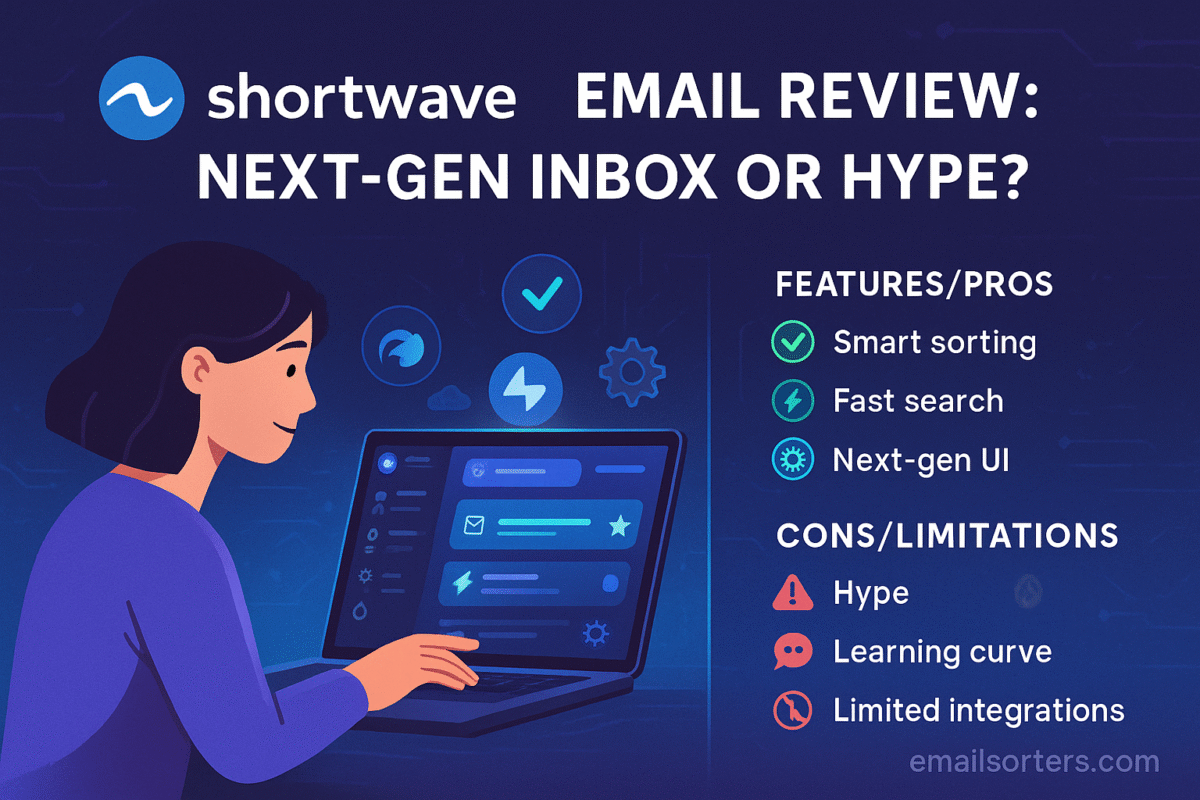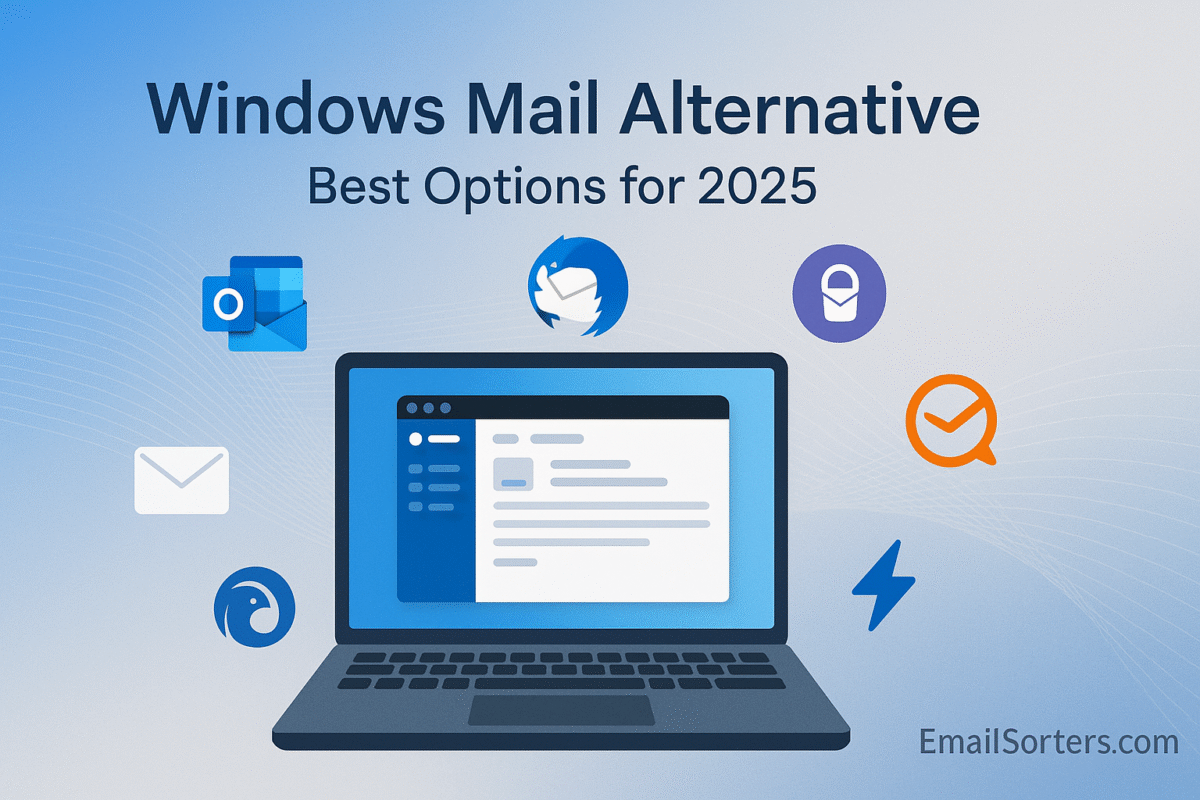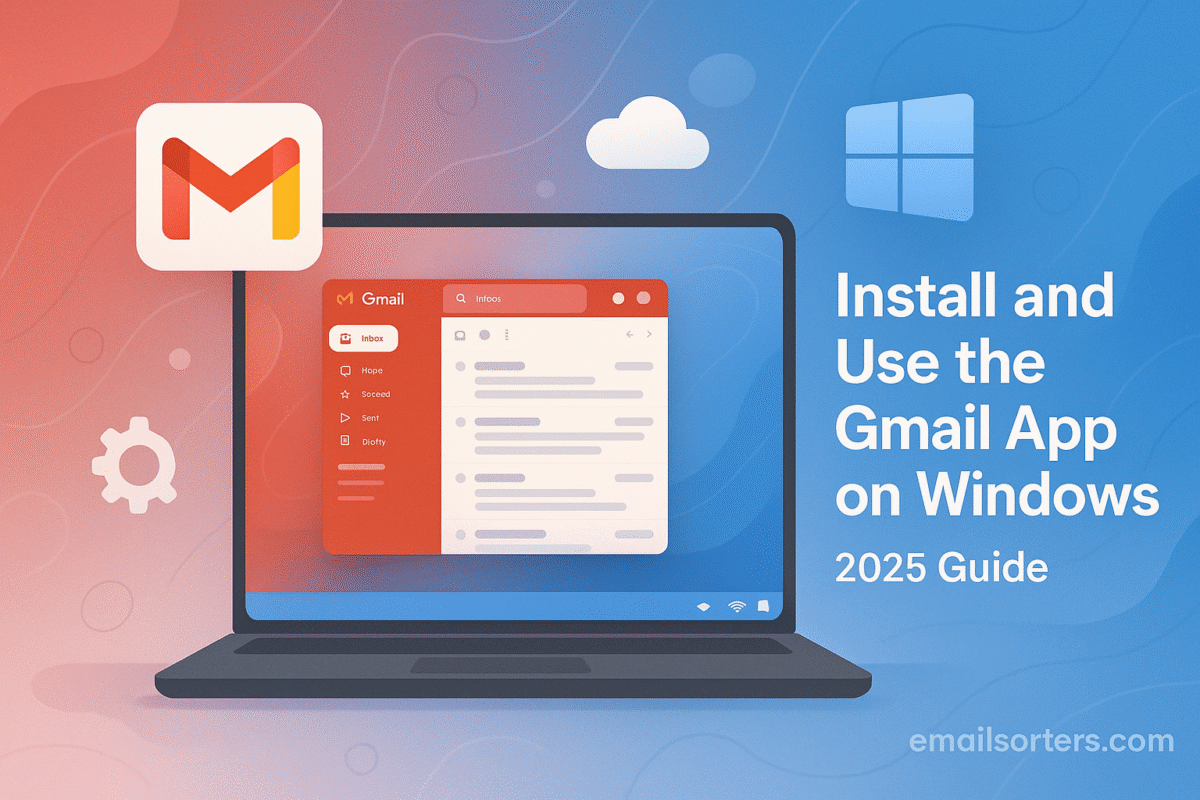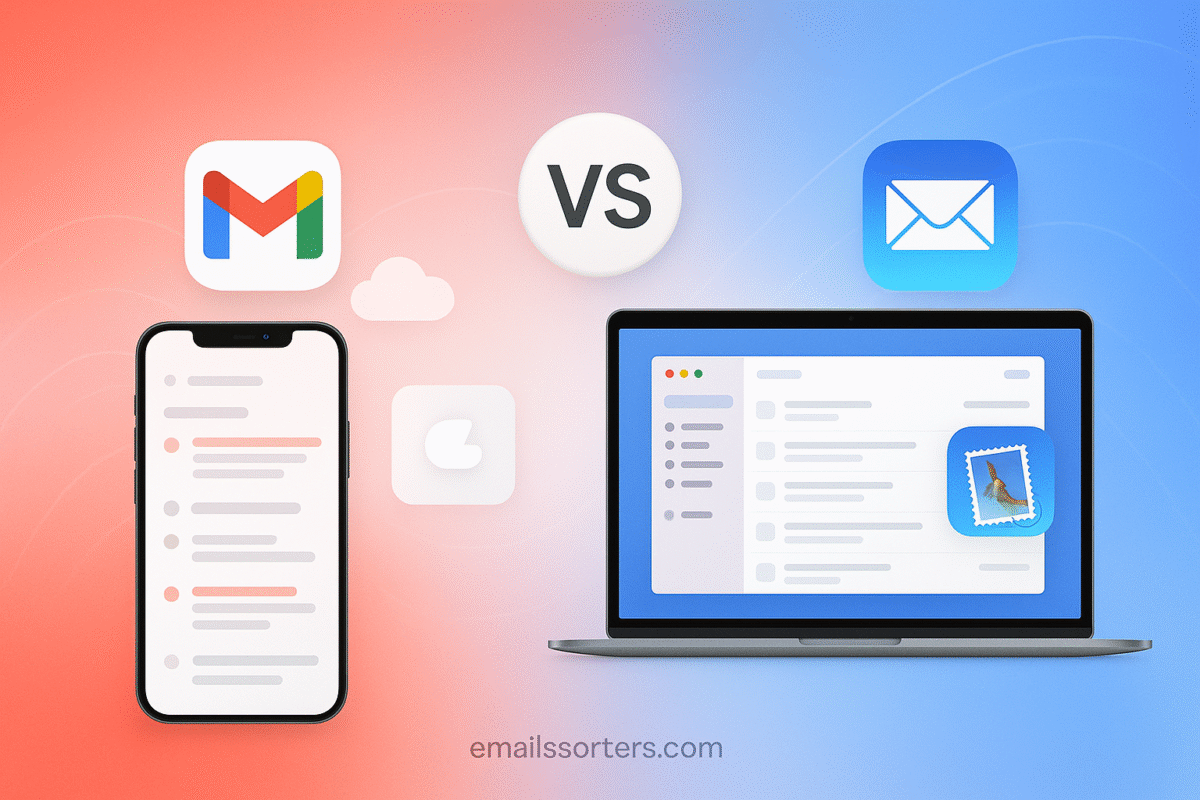Shortwave email review: Email is still essential for work and personal communication, but traditional inboxes often feel cluttered and overwhelming. Shortwave takes a modern approach, reimagining email with smart sorting, built-in collaboration, and real-time updates to make managing messages faster and more intuitive.
The big question: does it actually deliver on that promise? Shortwave positions itself as a next-gen inbox designed to reduce noise and streamline productivity, but how well does it work in daily use?
In this review, we’ll break down Shortwave’s key features, design, and overall user experience. We’ll also look at its strengths, weaknesses, and whether it truly lives up to the hype as the future of email, or just another app with big claims. By the end, you’ll know if Shortwave is worth switching to for your email workflow.
What is Shortwave?
Shortwave is a modern email platform built on top of Gmail infrastructure. Created by former Google engineers, the tool offers a fresh experience aimed at making email feel more like real-time messaging, while still supporting traditional workflows. It doesn’t try to reinvent email completely; it enhances it.
Who is It Designed For?
Shortwave targets professionals, startups, and teams who deal with high-volume email and need better control, visibility, and speed. It appeals to users who like the simplicity of chat apps but can’t abandon email for daily communication. With features like shared inboxes and intelligent prioritization, it’s built for collaborative environments.
Why It’s Gaining Attention
Shortwave is gaining buzz for its minimalist design, smart notification handling, and ability to streamline workflows. It’s positioned as an answer to email overload; reducing noise, highlighting what matters, and promoting fast replies. It’s also one of the few tools that truly blends real-time alerts with email threading, giving it an edge in productivity circles.
Key Features of Shortwave
Collaborative Inboxes
One of Shortwave’s standout features is the ability to manage team emails with shared visibility. Instead of forwarding emails around or CC’ing everyone, users can comment, assign, and reply together from a central thread. It’s a Gmail-native twist on helpdesk-style collaboration.
Smart Sorting and Filtering
Shortwave intelligently categorizes messages into sections like “Pinned,” “Recent,” and “Done.” Important threads stay up top, while less critical messages fall into the background. Users can manually archive messages or let Shortwave’s algorithm decide what to prioritize.
The interface minimizes clutter while still giving users control over how their inbox is sorted. Filters are based on rules but also adapt to usage habits.
Real-Time Notifications
Notifications in Shortwave feel instant and targeted. You get alerts only when they’re truly needed; like when tagged in a team inbox or when receiving a response on a pinned thread. This reduces the noise associated with standard desktop or mobile notifications.
For users who work in teams or respond frequently, this keeps attention focused without constant distraction.
Google Workspace Integration
Shortwave sits directly on top of Gmail. All messages are synced, meaning you can still access your inbox via the Gmail interface if needed. But within Shortwave, you gain access to sorting, pinning, and collaboration tools not available in Gmail alone.
Integration with Google Calendar, Contacts, and authentication is seamless. No need to switch ecosystems or reconfigure existing workflows.
Cross-Platform Support (Mobile & Desktop)
Shortwave is available as a web app, desktop client (macOS/Windows via browser wrapper), and mobile app for Android and iOS. Sync is real-time across all platforms, and the experience is consistent; same layout, same thread grouping, same sorting logic.
Features Overview
- Collaborative team inboxes
- Pinned threads and message highlights
- Real-time desktop and mobile notifications
- Auto-grouping by conversation or topic
- Smart filters (recent, done, low priority)
- Gmail sync and compatibility
- Chat-style interface for replies
- Thread muting and pinning
- Shared comments and assignments
- Read receipts (internal)
- Android, iOS, macOS, and Windows support
- Search powered by Gmail’s backend
- No ads, even on the free plan
User Interface and Ease of Use
Clean Design Philosophy
Shortwave offers a streamlined interface that feels more like a modern messaging app than traditional email. It avoids clutter by showing only what’s essential; threads, labels, and filters; while hiding secondary functions in collapsible menus.
The main inbox view is divided into intuitive sections like “Pinned,” “Recent,” and “Done.” These segments act as real-time organizers, allowing users to keep focus on what needs action while gently pushing completed or low-priority items out of sight.
Threaded Conversations
Shortwave uses conversation threads in a cleaner way than Gmail. Each thread group replies naturally, minimizing redundant signatures or quoted text. Replies look like chat messages; quick, conversational, and to the point.
This approach makes email feel more like Slack or iMessage, reducing the friction usually found in formal message formats.
Navigation and Keyboard Shortcuts
Power users will appreciate that Shortwave supports full keyboard navigation. Shortcuts allow you to pin, archive, reply, assign, and switch between filters without touching the mouse. There’s also a command palette that helps surface recent threads and run actions quickly.
For casual users, the UI is still intuitive enough that everything feels easy to find without training.
Pricing and Subscription Options
Free vs Paid Tiers
Shortwave offers a free version that includes most features for individuals, including:
- Gmail sync
- Smart inbox
- Mobile and desktop access
- Message pinning and sorting
- Real-time notifications
The free plan is generous, making it suitable for solo users or light collaborators.
Features Included in Each Plan
The Pro plan (starting around $9/month/user) includes:
- Unlimited history for shared inboxes
- Admin controls
- Priority support
- Team collaboration features
- Custom roles and assignments
The Business and Enterprise tiers scale up with SSO, enhanced permissions, and advanced workspace controls, aimed at growing companies or larger teams.
Value for Teams vs Individuals
For individual users, the free version is more than enough. Teams who want shared inboxes, assignments, or admin tools will benefit from upgrading to Pro or Business tiers. Compared to platforms like Front or Help Scout, Shortwave is competitively priced while keeping Gmail integration front and center.
Pros and Cons
Pros
- Clean, real-time interface that feels modern
- Built directly on Gmail, no email migration needed
- Smart sorting makes inbox zero more achievable
- Great for collaborative teams
- Free plan includes essential features
- Consistent experience across devices
Cons
- Gmail-only (no support for other email providers)
- Lacks some advanced automation or rules found in other tools
- Shared inbox features are only in paid plans
- Offline functionality is limited
- No built-in calendar or contact interface
Comparison with Traditional Clients
Gmail vs Shortwave
Gmail offers more traditional email management with deep labels, filters, and integrations. But it can feel outdated and cluttered. Shortwave trims the fat, offering only the tools most people actually use; and does so with greater speed and fewer distractions.
However, Gmail’s customization and server-side rules still outperform Shortwave for users needing deep automation.
Outlook vs Shortwave
Outlook focuses on full-suite integration; email, calendar, tasks, and contacts. It’s best for enterprise environments tied to Microsoft 365. Shortwave, on the other hand, strips email down to its essentials and adds collaboration.
Final Recommendation: Who Should Use Shortwave?
Shortwave stands out as a genuinely fresh approach to email; especially for people tired of the clutter and slowness of traditional inboxes. Its blend of smart sorting, intuitive collaboration, and real-time notifications makes it an excellent option for fast-paced work environments.
Best For:
- Teams using Gmail and Google Workspace
- Professionals looking for a more focused inbox
- Users who prefer messaging-style communication
- Startups and remote teams needing lightweight collaboration tools
May Not Be Ideal For:
- Users who need support for non-Gmail accounts
- Those who rely heavily on offline access or full-suite tools (e.g., calendar, tasks)
- People who prefer deep customization over minimalist design
Shortwave won’t replace power-user tools like Thunderbird or enterprise platforms like Outlook for everyone. But for many, it offers exactly what modern email has been missing; speed, clarity, and collaboration, all without straying too far from Gmail’s familiar backbone.
FAQs
Is Shortwave secure for business use?
Yes. Shortwave uses Gmail’s infrastructure, so your data remains within Google’s secure ecosystem. It also supports administrative controls and permissions for teams using paid plans.
Can I use Shortwave without a Gmail account?
No. Shortwave is built entirely on top of Gmail. You must log in with a Gmail or Google Workspace account.
Does Shortwave replace Gmail or work with it?
Shortwave works alongside Gmail. All messages remain in Gmail and can be accessed via either interface. Any changes made in Shortwave (archiving, replying, labeling) are reflected in Gmail.
Is Shortwave better for teams or individuals?
Both. Individuals benefit from a clean, focused inbox with smart organization. Teams gain powerful collaboration features like shared inboxes and assignments (available in Pro plans).
Does Shortwave have offline access?
Currently, Shortwave is designed for always-connected environments. Offline capabilities are limited compared to apps like Outlook or Thunderbird.




